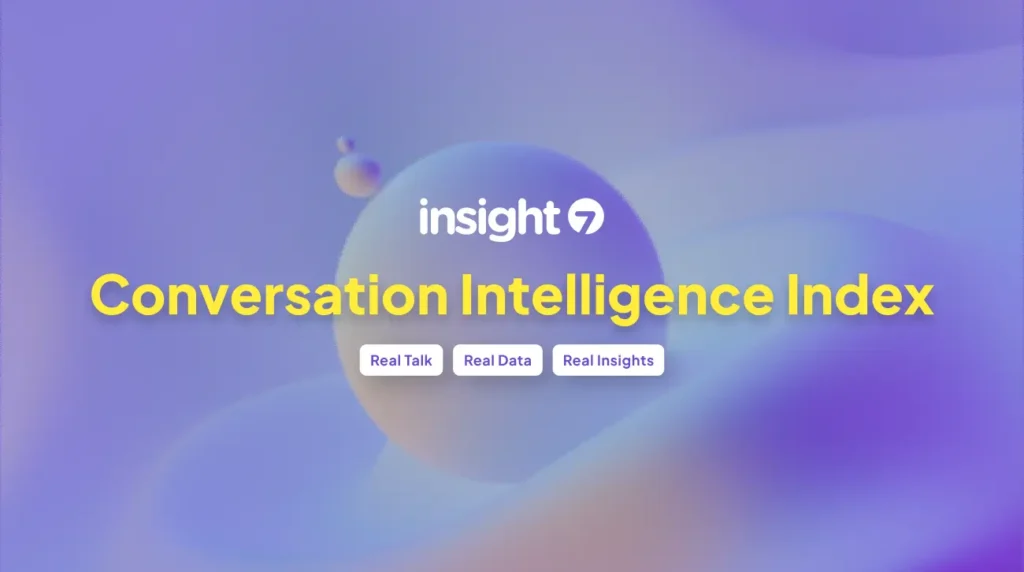Ethnographic Research Analysis: Tools and Techniques
-
Hello Insight
- 10 min read
Why Ethnographic Research Matters
Ethnographic research is essential for understanding the complexities of human behavior and social interactions. It allows researchers to:
- Gain In-Depth Insights: By immersing themselves in the participants’ environments, researchers can uncover hidden motivations and cultural nuances that traditional research methods may overlook.
- Identify Patterns and Trends: Ethnographic studies help identify recurring themes and patterns in behavior, which can inform product development, marketing strategies, and user experience design.
- Enhance Empathy: Understanding participants’ perspectives fosters empathy, enabling organizations to create solutions that genuinely address users’ needs.
Key Tools for Ethnographic Research Analysis
1. Insight7
Insight7 is a leading platform for analyzing qualitative data from ethnographic research. It streamlines the process of synthesizing insights from interviews, focus groups, and observational studies. Here are some key features of Insight7:
- Automated Transcription: Insight7 offers a built-in transcription service that converts audio and video recordings into text with high accuracy (97-99%). This feature saves researchers significant time and effort in manual transcription.
- Thematic Analysis: The platform allows users to extract themes and insights from transcripts easily. Users can define custom tags and categories to organize their findings effectively.
- Multi-Project Analysis: Insight7 enables researchers to analyze multiple projects simultaneously, making it easier to compare insights across different studies.
- Journey Mapping: Users can create visual representations of customer journeys, highlighting pain points and opportunities for improvement.
- Data Privacy Compliance: Insight7 takes data privacy seriously, ensuring compliance with regulations such as GDPR and SOC2. Users can anonymize sensitive information during the analysis process.
To experience the power of Insight7, you can sign up here for a free trial and start transforming your ethnographic research data into actionable insights.
Extract insights from interviews, calls, surveys and reviews for insights in minutes
2. NVivo
NVivo is a qualitative data analysis software that helps researchers organize and analyze unstructured data. It is widely used in ethnographic research for its robust coding and analysis capabilities. Key features include:
- Data Organization: NVivo allows users to import various data types, including text, audio, video, and images, making it versatile for ethnographic studies.
- Coding and Categorization: Researchers can code data segments and categorize them into themes, facilitating in-depth analysis.
- Querying and Visualization: NVivo provides powerful querying tools to explore relationships between codes and visualize data through charts and models.
3. Atlas.ti
Atlas.ti is another popular qualitative data analysis tool that supports ethnographic research. It offers a user-friendly interface and powerful analysis features:
- Data Integration: Users can import data from various sources, including interviews, focus groups, and field notes.
- Visual Network: Atlas.ti allows researchers to create visual networks that illustrate the relationships between codes and themes.
- Collaboration Features: The platform supports team collaboration, enabling multiple researchers to work on the same project simultaneously.
4. Dedoose
Dedoose is a web-based qualitative data analysis tool that is particularly useful for mixed-methods research, combining qualitative and quantitative data:
💬 Questions about Ethnographic Research Analysis: Tools and Techniques?
Our team typically responds within minutes
- User-Friendly Interface: Dedoose offers an intuitive interface that makes it easy for researchers to analyze data without extensive training.
- Real-Time Collaboration: The platform allows multiple users to collaborate in real-time, making it ideal for team-based research projects.
- Data Visualization: Dedoose provides various visualization tools to help researchers present their findings effectively.
5. MAXQDA
MAXQDA is a comprehensive qualitative data analysis software that supports various research methods, including ethnography:
- Flexible Data Import: Users can import data from various sources, including surveys, interviews, and social media.
- Mixed Methods Support: MAXQDA allows researchers to analyze both qualitative and quantitative data, making it suitable for mixed-methods studies.
- Visual Tools: The software offers a range of visual tools, including concept maps and word clouds, to help researchers present their findings.
6. Transana
Transana is a qualitative data analysis tool specifically designed for analyzing audio and video data:
- Video and Audio Analysis: Researchers can transcribe and analyze audio and video recordings, making it ideal for ethnographic studies.
- Coding and Tagging: Transana allows users to code and tag segments of transcripts, facilitating thematic analysis.
- Data Export: Users can export their analysis results for further reporting and presentation.
7. Qualitative Data Analysis Software (QDAS)
QDAS refers to a range of software tools designed for qualitative data analysis. These tools often include features for coding, categorizing, and analyzing unstructured data:
- Customizable Features: Many QDAS tools allow researchers to customize their analysis process based on their specific needs.
- Collaboration Options: Some QDAS tools support team collaboration, enabling multiple researchers to work on the same project.
- Integration with Other Tools: QDAS tools often integrate with other research tools, enhancing their functionality.
Conclusion: Integrating Ethnographic Methods for Comprehensive Research Analysis
Among these tools, Insight7 stands out as a comprehensive platform for synthesizing qualitative data. With its automated transcription, thematic analysis, and multi-project capabilities, Insight7 empowers researchers to make sense of their ethnographic research efficiently. By leveraging these tools, researchers can gain deeper insights into customer behavior, improve decision-making, and drive innovation within their organizations.
If you’re looking to enhance your ethnographic research analysis, consider exploring Insight7 and its powerful features. Sign up here for a free trial and start transforming your qualitative data into actionable insights today.
Analyze & Evaluate Calls. At Scale.

💬 Questions about Ethnographic Research Analysis: Tools and Techniques?
Our team typically responds within minutes



